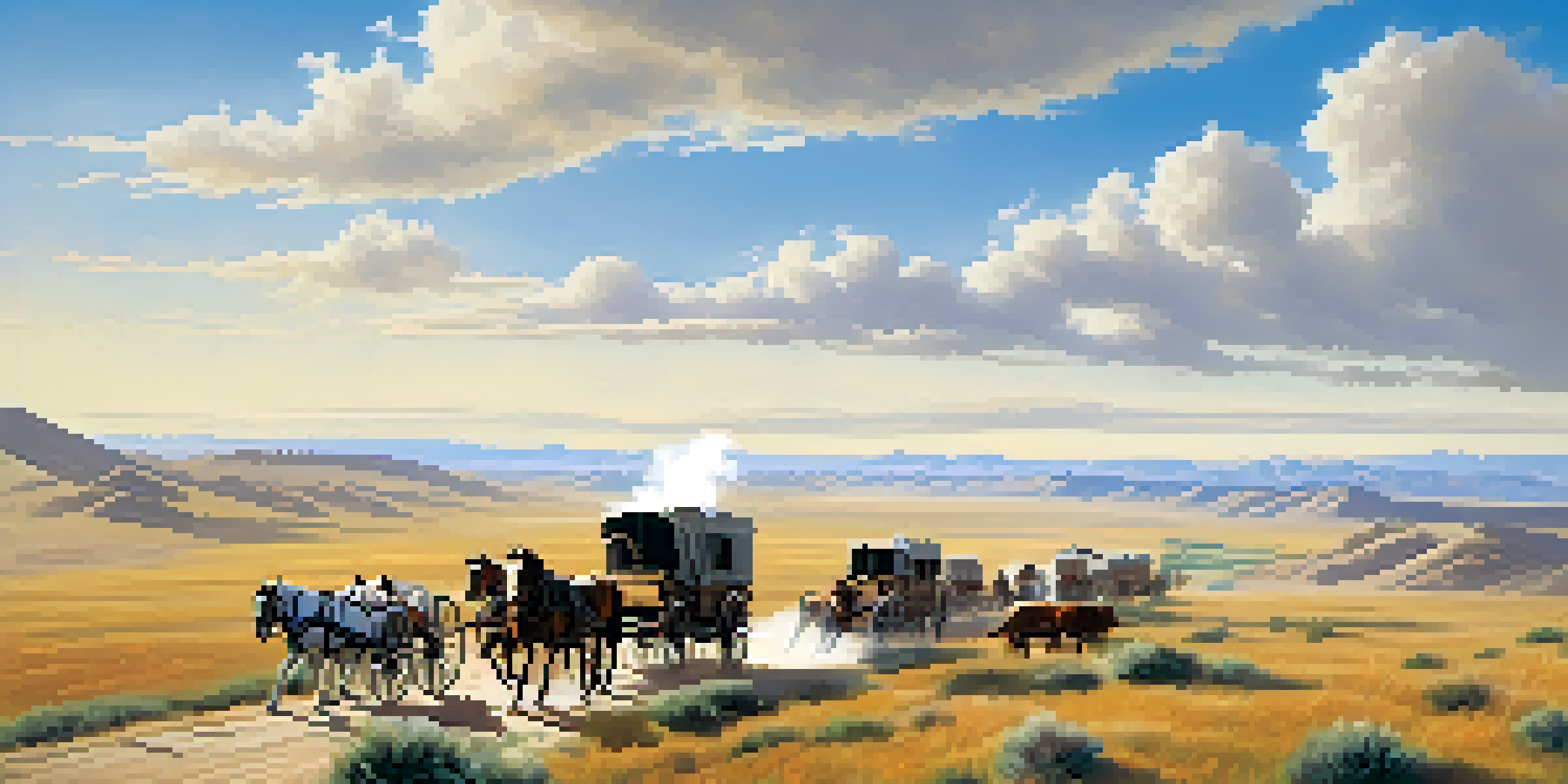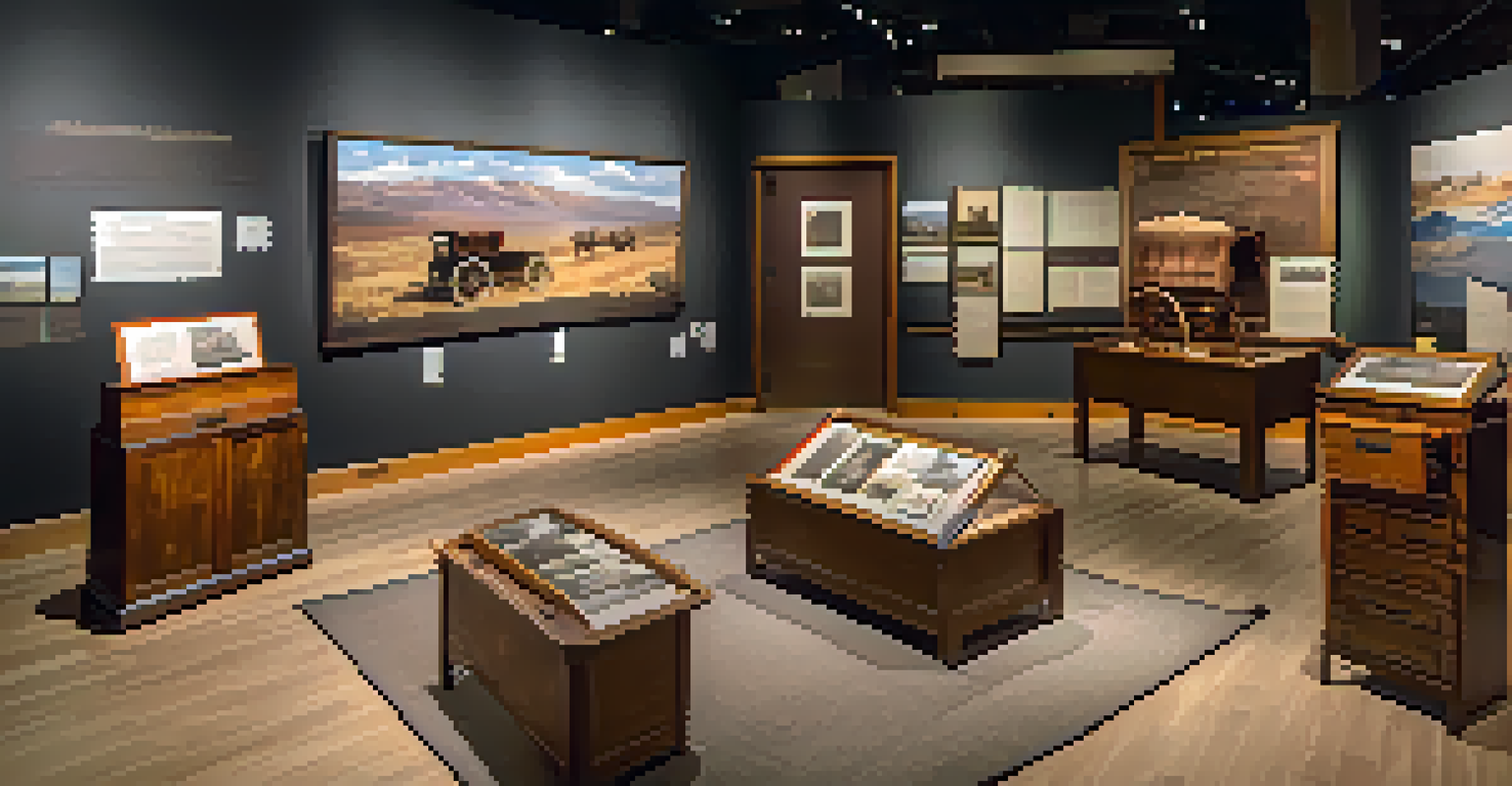The Oregon Trail: Following Pioneers to the Westward Frontier

The Origins of the Oregon Trail and Its Significance
The Oregon Trail was established in the early 1840s, serving as a vital route for pioneers heading west. Spanning over 2,000 miles, it connected the Missouri River to the fertile lands of Oregon. This trail was crucial for settlers seeking new opportunities and a fresh start in the West.
The Oregon Trail has become a symbol of the American spirit, embodying the drive for exploration and the pursuit of dreams.
The significance of the Oregon Trail goes beyond just a pathway; it represented hope and the pursuit of the American Dream. Thousands embarked on this arduous journey, motivated by the promise of land, wealth, and a better life. The trail became a symbol of determination and resilience in the face of adversity.
Alongside its practical purpose, the Oregon Trail also played a key role in shaping American culture and identity. The stories of those who traveled it have become legendary, weaving a rich tapestry of adventure, struggle, and triumph that continues to inspire generations.
Life on the Trail: Challenges and Triumphs
Traveling the Oregon Trail was no easy task. Pioneers faced numerous challenges, including harsh weather, treacherous terrain, and limited supplies. Many families had to make heartbreaking decisions, often leaving behind cherished possessions to lighten their loads.

Despite these hardships, the spirit of camaraderie among travelers often shone through. Pioneers formed wagon trains, creating a sense of community that helped them support one another. Sharing resources, stories, and even laughter helped them navigate the difficulties of the journey together.
Oregon Trail: A Path to Opportunity
The Oregon Trail was a vital route for pioneers seeking new opportunities and a better life in the West.
Moreover, the triumphs along the way were equally significant. From successfully crossing rivers to celebrating milestones with newfound friends, each achievement bolstered the pioneers’ resolve. These moments of victory were essential in keeping hope alive during the long, grueling trek.
The Role of Native American Tribes on the Trail
The Oregon Trail was not just a path for settlers; it also intersected with the lands of various Native American tribes. Initially, many tribes, such as the Nez Perce and Shoshone, helped guide pioneers and provided critical resources. Their knowledge of the land proved invaluable to those unfamiliar with the territory.
The journey of a thousand miles begins with one step.
However, as more settlers moved west, tensions began to rise. The influx of pioneers led to disputes over land and resources, fundamentally altering the lives of Native Americans. Many tribes were forced to adapt to the changing landscape, while others faced displacement and loss of their traditional ways of life.
Understanding this complex relationship is crucial to grasping the full story of the Oregon Trail. It reminds us that history is often multifaceted, with multiple narratives intertwining. Recognizing the contributions and challenges faced by Native Americans enriches our appreciation of this pivotal chapter in American history.
The Impact of the Gold Rush on the Oregon Trail
The discovery of gold in California in 1848 had a profound impact on the Oregon Trail. Suddenly, the trail became a bustling thoroughfare, as fortune seekers flooded westward in search of riches. This surge of travelers not only increased competition for resources but also intensified the challenges faced by those on the trail.
The Gold Rush transformed the landscape of westward expansion, bringing a sense of urgency and excitement to the journey. Towns and supply stations sprang up along the trail to cater to the increasing number of pioneers. Some settlers even turned their wagons into makeshift shops, selling goods to fellow travelers.
Challenges and Community on the Trail
Travelers faced numerous hardships on the Oregon Trail, yet the spirit of camaraderie helped them navigate their journey.
However, the rush for gold also led to further strife and conflict. As more people migrated, tensions grew between settlers and Native Americans, as well as among competing miners. The legacy of the Gold Rush is a testament to the complexities of the American frontier, where dreams of wealth often came at a steep cost.
Famous Landmarks Along the Oregon Trail
As pioneers made their way west, they encountered numerous landmarks that became integral to their journey. Places like Chimney Rock and Independence Rock served as vital navigation points, often marking milestones in their trek. These natural formations not only guided settlers but also provided a sense of accomplishment along the way.
Many travelers carved their names into these landmarks, leaving behind a piece of their story. This practice created a legacy that continues to intrigue historians and visitors alike. Seeing these names today connects us to the past, allowing us to appreciate the personal journeys of those who traveled before us.
Moreover, these landmarks often became sites of gathering and storytelling. Pioneers would share tales of their adventures, trials, and triumphs, fostering a sense of community. Today, these historical sites serve as reminders of the journey taken by countless pioneers, preserving their stories for future generations.
The Lasting Legacy of the Oregon Trail
The Oregon Trail left an indelible mark on American history and culture. It played a crucial role in the westward expansion that shaped the nation. The stories of resilience, community, and adventure echo through time, reminding us of the spirit that drove pioneers to seek new horizons.
Today, the Oregon Trail is commemorated through various historical sites, museums, and reenactments. These initiatives not only honor the pioneers but also educate the public about their experiences. Engaging with this history fosters a deeper understanding of the challenges faced by those who ventured into the unknown.
Legacy of the Oregon Trail Today
The Oregon Trail's legacy continues to inspire modern adventurers who explore its historical routes and landscapes.
Furthermore, the legacy of the Oregon Trail continues to inspire modern adventurers. Many people still seek the thrill of exploration and the allure of the frontier. Whether through hiking, biking, or simply appreciating the scenic landscapes, the spirit of the Oregon Trail lives on in the hearts of those who dare to wander.
Exploring the Oregon Trail Today
Today, the Oregon Trail is more than just a historical route; it's a journey that many choose to explore firsthand. With various trails and parks dedicated to this rich history, visitors can walk in the footsteps of pioneers and experience the breathtaking landscapes they once traversed. It’s a chance to connect with the past while enjoying the beauty of the present.
Modern travelers can engage in educational programs, guided tours, and interactive exhibits that bring the history of the Oregon Trail to life. These experiences offer insights into the daily lives of pioneers, making the past feel tangible and relatable. It's a wonderful way to foster appreciation for the sacrifices and triumphs of those who came before us.

Whether you’re a history buff, an outdoor enthusiast, or just someone looking for a unique adventure, exploring the Oregon Trail today is a rewarding experience. It serves as a reminder of the human spirit's resilience and the ongoing quest for discovery, making it a timeless destination for all.